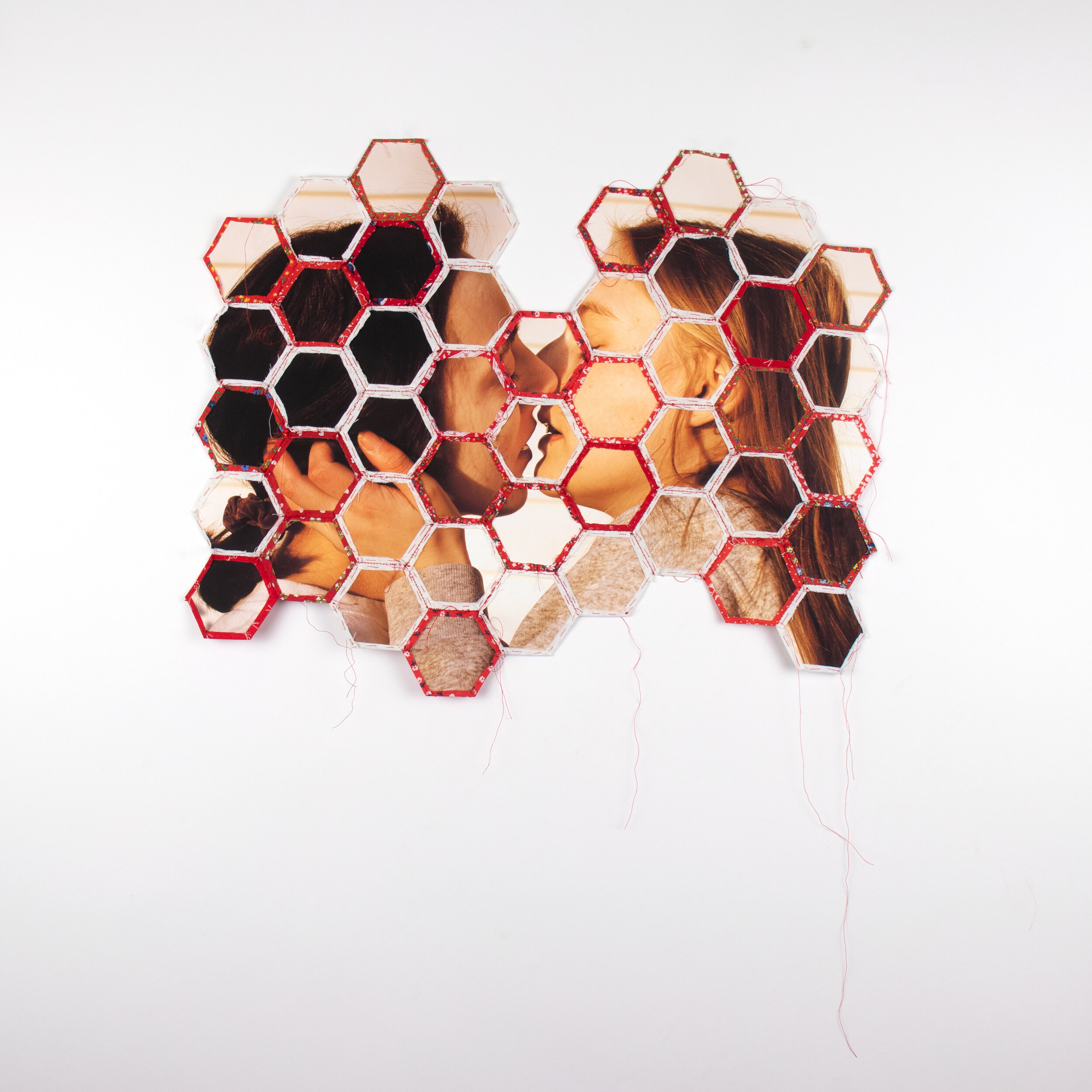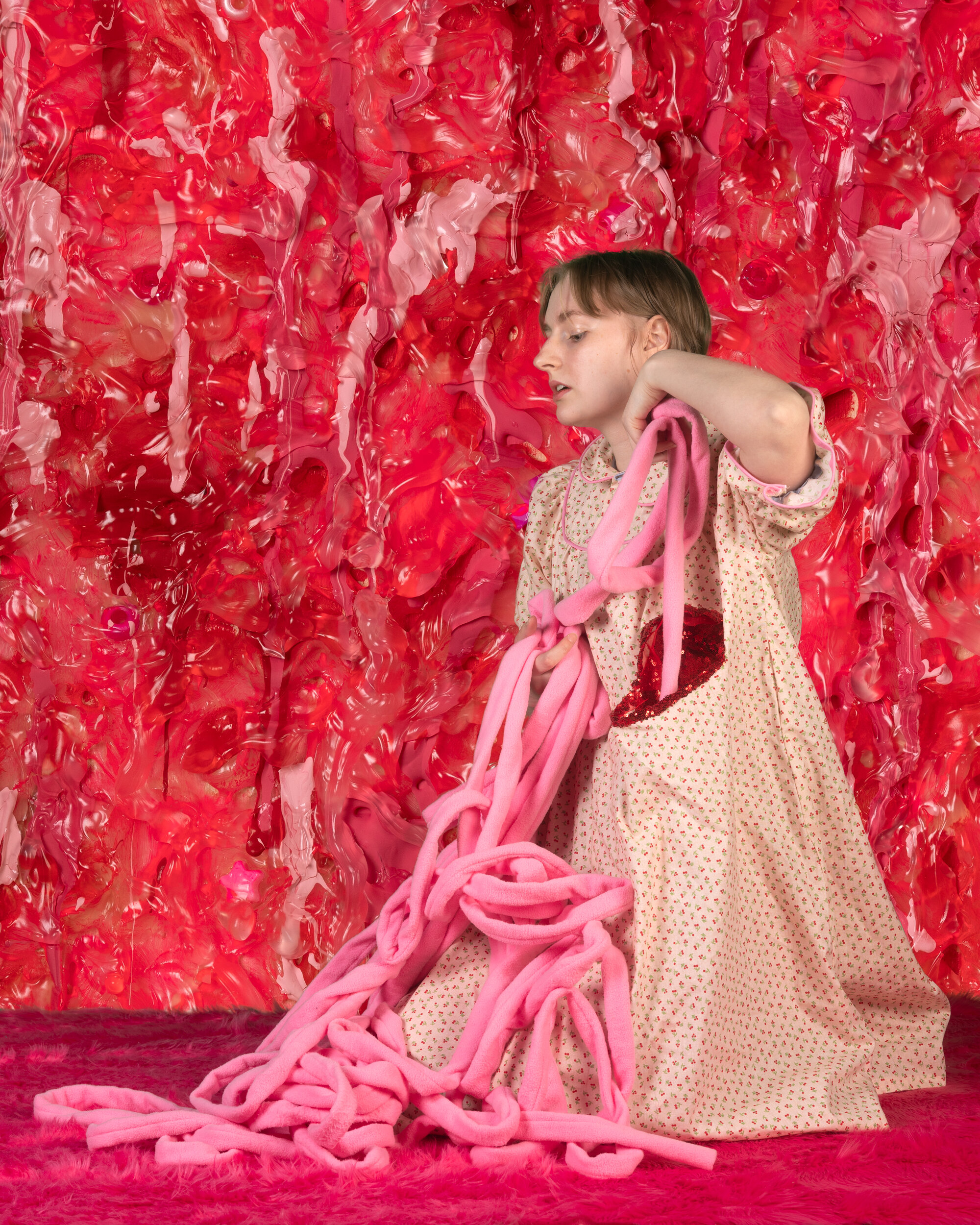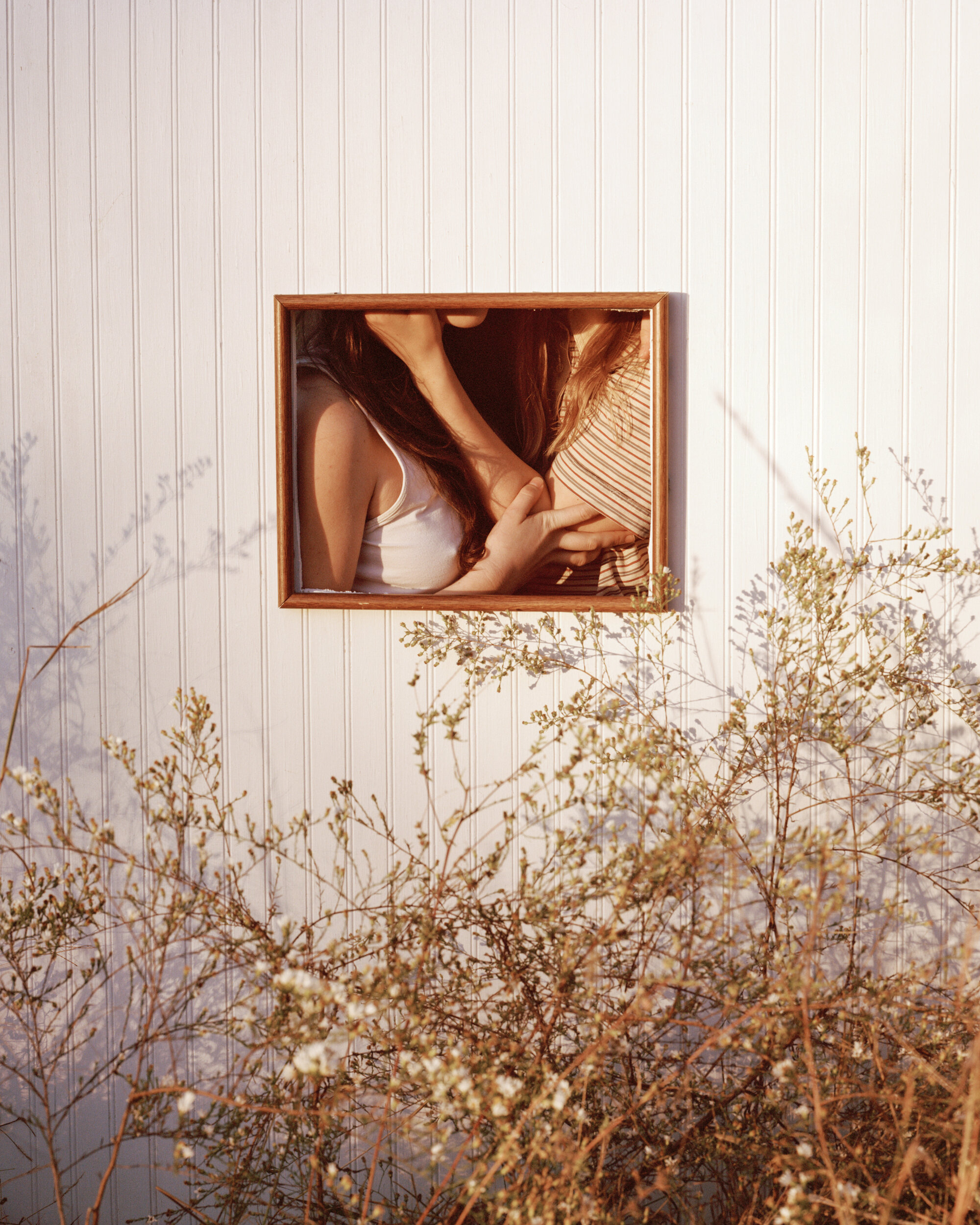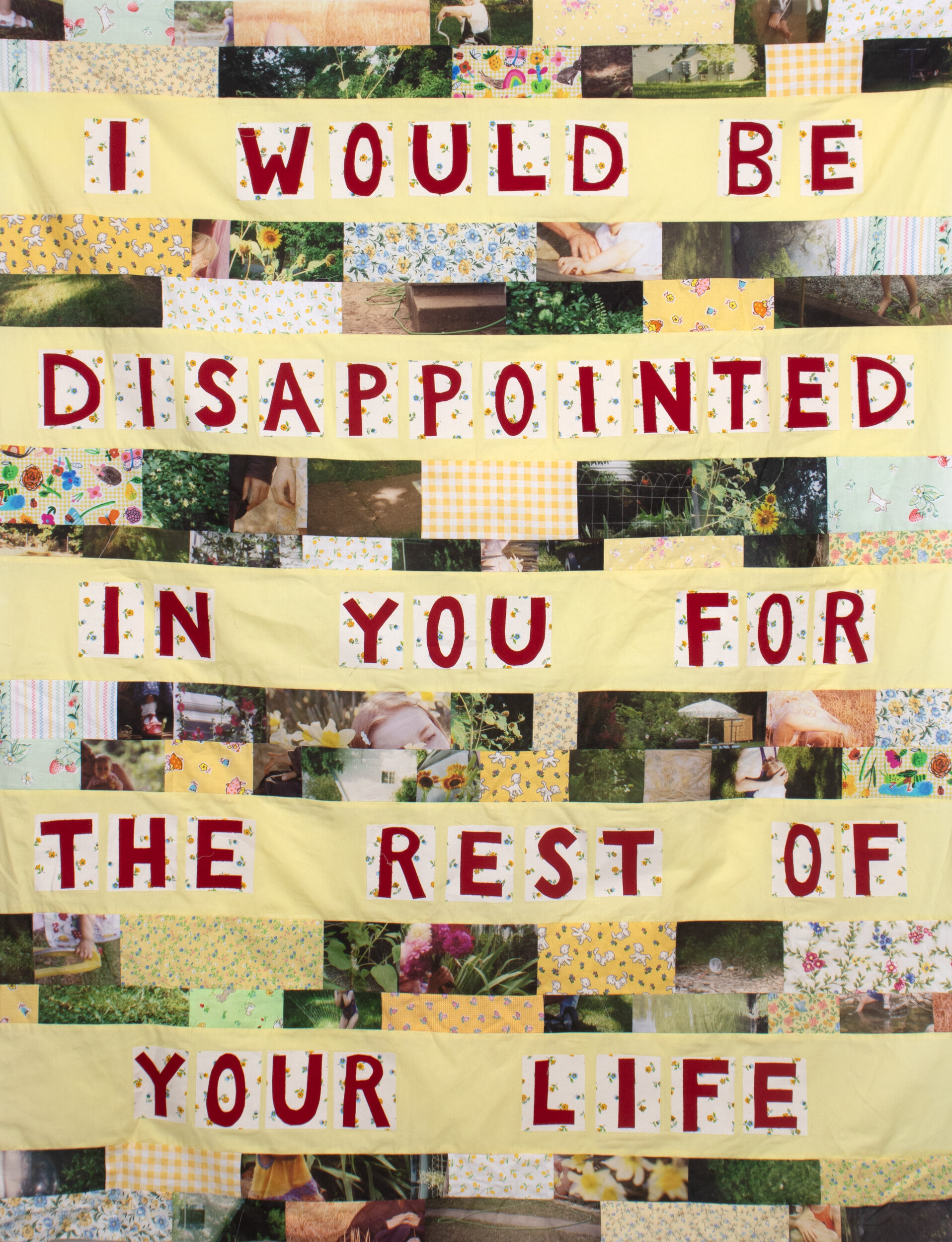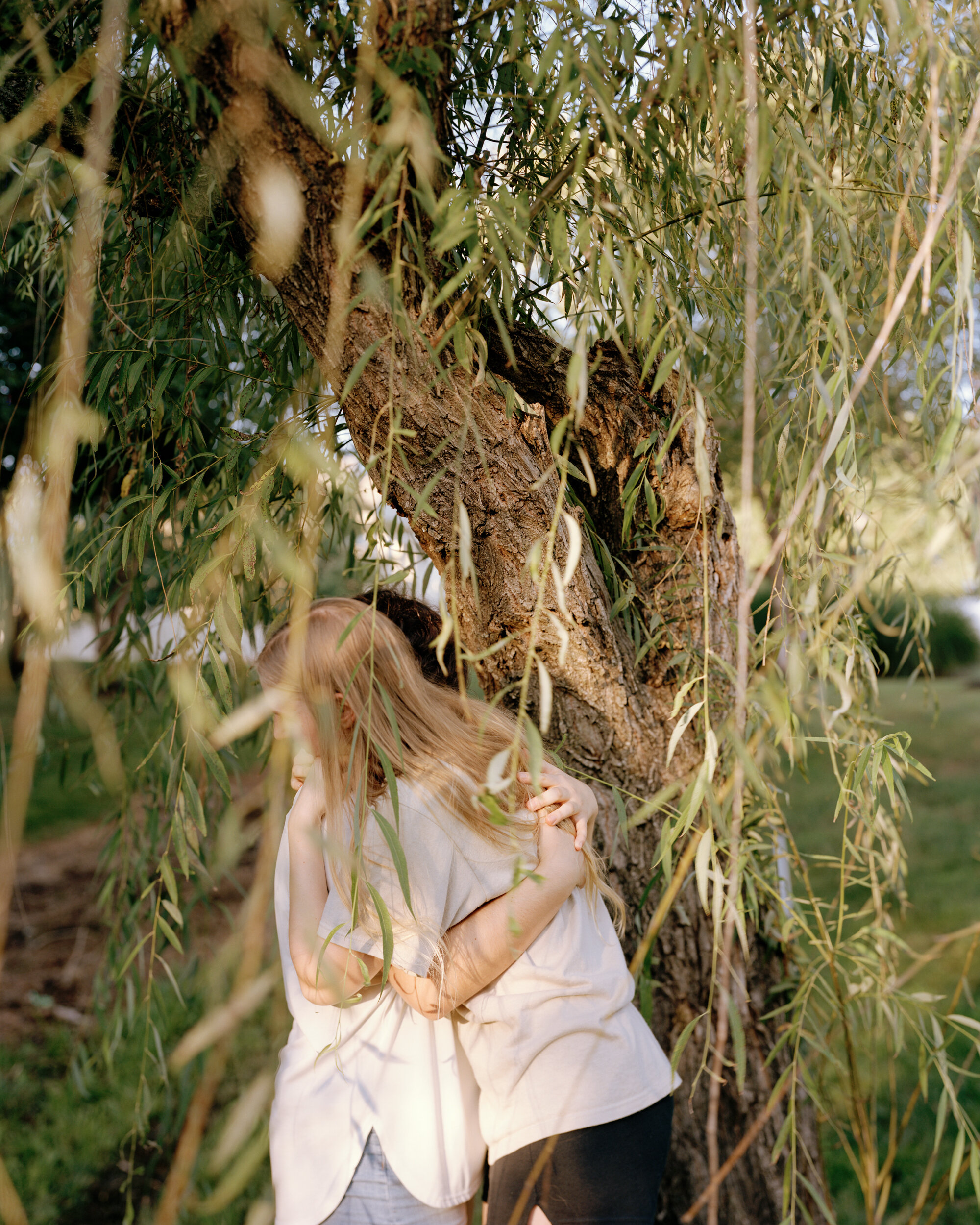Q&A: PENNY MOLESSO
By Zora J Murff | February 18, 2021
Organized by Strange Fire Collective (SFC), An Active and Urgent Telling features the work of six contemporary artists working with photography to honor the weight of lived experience through an intersectional lens. Stemming from SFC’s mission, this exhibition centers artists for whom questions of identity deeply affect their relationship to representation. The works included engage with ideas of visibility and invisibility, the reality of lives that exist outside of, or in opposition to, expected and enforced social norms, and the social and political power of speaking one’s truth. Each artist contributes nuance to a redefinition of the commonly understood fabric of difference through an active and urgent telling of their own lived experiences.
Original, in-depth interviews with each exhibiting artist will be posted on www.strangefirecollective.com during the exhibition to illuminate a more thoughtful understanding of the artists and their work. Exhibiting artists include Jennifer Ling Datchuk, Delphine Fawundu, Penny Molesso, Rachelle Mozman Solano, Irene Reece, and Chanell Stone.
Zora J Murff (ZJM): Hey Penny! I’m excited to catch up with you about your work and how the first year of grad school has been treating you. What’s been happening?
Penny Molesso (PM): Hi Zora! I'm very excited to catch up and talk about my work with you! Like a lot of people in their first semester of grad school I made a bunch of stuff that I didn't like. I was avoiding self portraits in an effort to not have to perceive myself, and ended up making very strange furniture that now feel like physical manifestations of my gender dysphoria. But now I'm back to making photographs and starting to feel excited about my work again. It's also been wonderful that grad school has given me a close knit group of peers, and the opportunity to collaborate.
Bedroom, 2019
ZJM: Lol. I too decided to make sculpture when I started grad school. It sounds like yours may be a little more refined than mine (conceptually and technically). The practice of making sculptural works was something you did as an undergraduate student. Why has making things other than photographs been important to you?
PM: Most of the sculptural works I made in undergrad were quilts, or textile related. I'm still working on quilts now, even though I abandoned some of my other sculptural endeavors. Quilting is a medium that is embedded with religious conservatism, so queer interventions in quilting feel like a great way to challenge and subvert those damaging ideologies. I did build set pieces and construct scenes in my previous work, which I still do now. It feels important for me to make images this way because it breaks down the limitations that "real life" imposes on my body and surroundings. There's also something super queer about creating an object like a quilt with the sole purpose of photographing it. It turns it into something that's function is purely performative.
ZJM: I know grad school is a tricky time to share work because you may not want to put anything out there too early, so rather than asking you to describe your work, I’ll ask how you’ve been thinking around your work lately?
PM: These are the things I see driving my work right now: horizons, artificial worlds, fields with no edges, desire, inaccessible healthcare, thunderstorms, intense anticipation.
I've always been interested in textiles and crafts. Clothes, quilts, sheets - textiles are so intimately connected to flesh, so I'm thinking of them as a way to transform the boundaries of my body. A lot of my process lately has started with making costumes. I think this began as a way to feel ok with seeing myself in photographs, but I love thinking of these clothes as a way to exaggerate and over-perform my relationship to gender. I'm also working with green screens in the lighting studio now, which feel loaded with queer potentiality. I've begun approaching making sets differently too, mostly creating miniature props and rooms to use as backgrounds, which has given me more freedom in what types of materials I can use. Stitching together many disparate parts into one photograph to make a new and surreal environment is really exciting to me.
Braid, 2019
ZJM: I was eager to include your work in An Active And Urgent Telling because I watched you struggle through a lot of early concepts or versions of ideas related to very personal things happening in your life. We decided to curate this exhibition with the throughline of lived experiences to illustrate the depth of such a concept. When you think about the term lived experience in relation to your work, what are some things that come to mind?
PM: My work is very much driven by my lived experiences. The work that is included in the exhibition is from a series about growing up in a home environment that was unaccepting of my queerness, and imagining lines of escape from the feeling of alienation I experienced in my home. I think I approached a lot of my early photographs with the idea of "visibility" in mind, but being visible isn't the same as being seen. In undergrad I was mostly focused on my experiences as a lesbian. It felt dangerous for me to visibly express my gender identity in the way I wanted because I was still living at home. For awhile I felt like I could only make work about being nonbinary if it was understandable to cisgender people, or somehow educated people, which would be inauthentic in representing my lived experiences. I recognize now that my body is probably never going to fit a mold of what many people expect a nonbinary trans* body should look like, and now I feel I can start having fun with that idea. How can I use my work to advocate for confusing queer bodies having power and being celebrated when I'm trying to be palatable to people who might think the validity of my identity is up for debate? I'm trying to no longer concern myself about whether my identity is validated by others. I'm coming at my new work from a perspective that I don't have to take myself too seriously. Being queer can be absurd and humorous and fun, and queer joy can be a form resistance. I hope that by making work that is incredibly personal and vulnerable about my own experiences, that other queer people can relate and feel seen in some way.
Cowboy, 2021
ZJM: Thank you, Penny, so much to engage here with. I’ll start first with the complications of representation, especially how you say, “For awhile I felt like I could only make work about being nonbinary if it was understandable to cisgender people…” This is a particular phenomena of othering we don’t talk about enough. It sounds like you’ve arrived at an understanding that you’re validating your identity for you, and no one else. It’s recognizing that your positionality is one similar to other folx, and those individuals will have the “inside track” so to speak. Asserting this for yourself means that cisgender individuals will need to educate themselves to find that deeper meaning. It’s easy to highlight such a dynamic broadly, but it gets very messy when experienced in real time. How have you dealt with such moments when they do happen?
PM: It is tricky, because I still do have to do a lot of educating, or preface my work with a disclaimer on how to respectfully talk about what it means to be non-binary. It's important to me to be genuine about who I am and not misrepresent myself because I fear being invalidated. I used to think if I just did a better job at embodying masculinity that I wouldn't get comments about how my appearance doesn't seem to be in line with the subject matter of my work. But feeding into this expectation only reinforces harmful stereotypes and misrepresentations of what it means to be non-binary; that it is like a third gender or halfway in between masculinity and femininity. I'm actively trying to dismantle these misconceptions in my work, so letting myself be genuine and authentic is way more "educational". Representation of a wide variety of trans* perspectives is crucial, because a lot of people's understanding of what it means to be trans* is so limited.
ZJM: Over the last year, we’ve witnessed organizations forced into difficult discussions about the hard truths of institutional oppression and the fallout of misrepresentation, under-representation, or non-representation. I’ve seen a frankness about identity politics that very much didn’t exist before. What do you think we should be focusing on or talking about right now?
PM: I think we should be having conversations about what it looks like for institutions to pursue representation in order to uplift marginalized groups, rather than representing marginalized groups to service their own public image. I can't count the amount of times I've seen shows or call for entries for "queer art" with no underlying theme or objective besides the fact the artists are all queer. I think this type of thing is problematic because it assumes that people in marginalized groups share the same set of interchangeable struggles, and doesn't adequately acknowledge intersectionality and the complexity of individual experiences. In order for art institutions to change, I think there needs to be a concerted effort to hand over positions of power to marginalized communities. As artists, it's also our responsibility to hold the organizations we work with accountable to ensure that they pursue genuine representation and a restructuring of power.
Football, 2019
ZJM: Something you and I talked a lot about during your last semester was the future. I assumed the nature of your work and graduating led to that preoccupation. Do you still think heavily about the future? What does the future of photography look like to you? How do you think your work fits into that future?
PM: I do still think heavily about the future. It's hard not to with the state this country is in. And I often feel like my body is suspended in a future I haven't arrived at yet. I think imagination is essential for liberatory change, which is an idea I'm trying to focus on in my work lately. As for the future of photography, I think the recent shift to cultivating digital spaces and using zoom has opened up a lot of doors in terms of accessibility and collaboration. It's great to see the networks of care and mutual support among artists that have come about because of this mode of communication. As much as people hate zoom, I'm really thankful for all the free events I've gotten to attend that wouldn't have been accessible otherwise. I really hope these kinds of things will stick around.
ZJM: What are some things you have going on outside of the studio?
PM: These are still tangentially related to the studio, but Jamie Ho and I will be giving a talk on using the aesthetics of camp in self portraiture as part of the Sheldon Museum's Person of Interest Symposium. It'll be happening online on April 2nd. I'm also working on doing some research for a queer public history project.
ZJM: Thank you so much for taking the time to chat, Penny. It’s always great catching up with you. Make sure I get an invite to your thesis exhibition, but I’m sure we’ll talk before then.
PM: For sure! Thanks so much for giving me the opportunity to share my work!
All images © Penny Molesso




